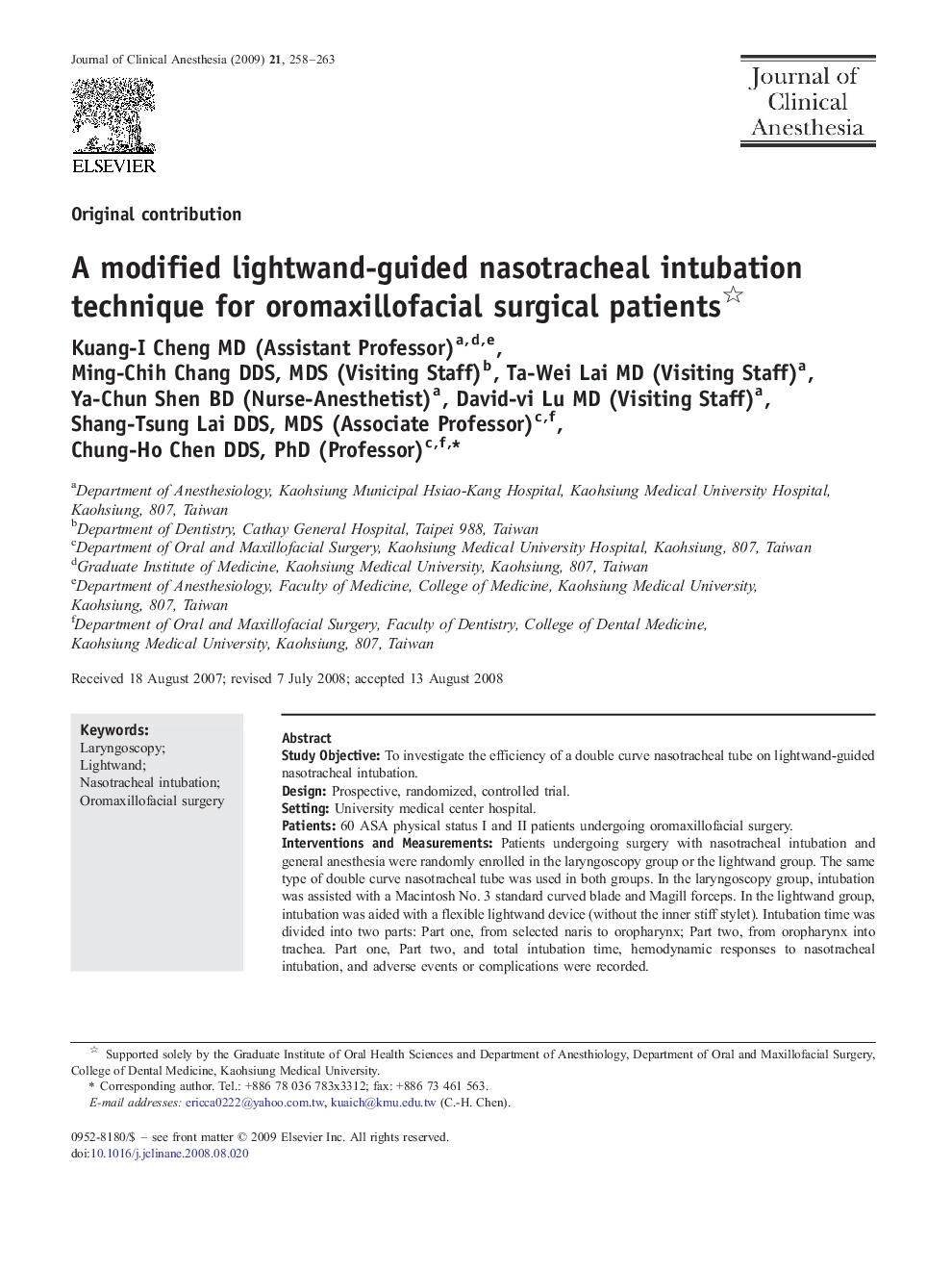| Article ID | Journal | Published Year | Pages | File Type |
|---|---|---|---|---|
| 2763946 | Journal of Clinical Anesthesia | 2009 | 6 Pages |
Study ObjectiveTo investigate the efficiency of a double curve nasotracheal tube on lightwand-guided nasotracheal intubation.DesignProspective, randomized, controlled trial.SettingUniversity medical center hospital.Patients60 ASA physical status I and II patients undergoing oromaxillofacial surgery.Interventions and MeasurementsPatients undergoing surgery with nasotracheal intubation and general anesthesia were randomly enrolled in the laryngoscopy group or the lightwand group. The same type of double curve nasotracheal tube was used in both groups. In the laryngoscopy group, intubation was assisted with a Macintosh No. 3 standard curved blade and Magill forceps. In the lightwand group, intubation was aided with a flexible lightwand device (without the inner stiff stylet). Intubation time was divided into two parts: Part one, from selected naris to oropharynx; Part two, from oropharynx into trachea. Part one, Part two, and total intubation time, hemodynamic responses to nasotracheal intubation, and adverse events or complications were recorded.Main ResultsTotal intubation times in the lightwand group and the laryngoscopy group were 22.8 ± 8.0 sec vs 30.3 ± 8.2 sec (P < 0.001), respectively. The lightwand group had comparable hemodynamic responses to those of the laryngoscopy group. Adverse events and complications were all self-limited, with similar occurrence in both groups.ConclusionFor patients undergoing oromaxillofacial surgery, modified lightwand-guided nasotracheal intubation is feasible with a double curve nasotracheal tube and is an efficient alternative technique.
